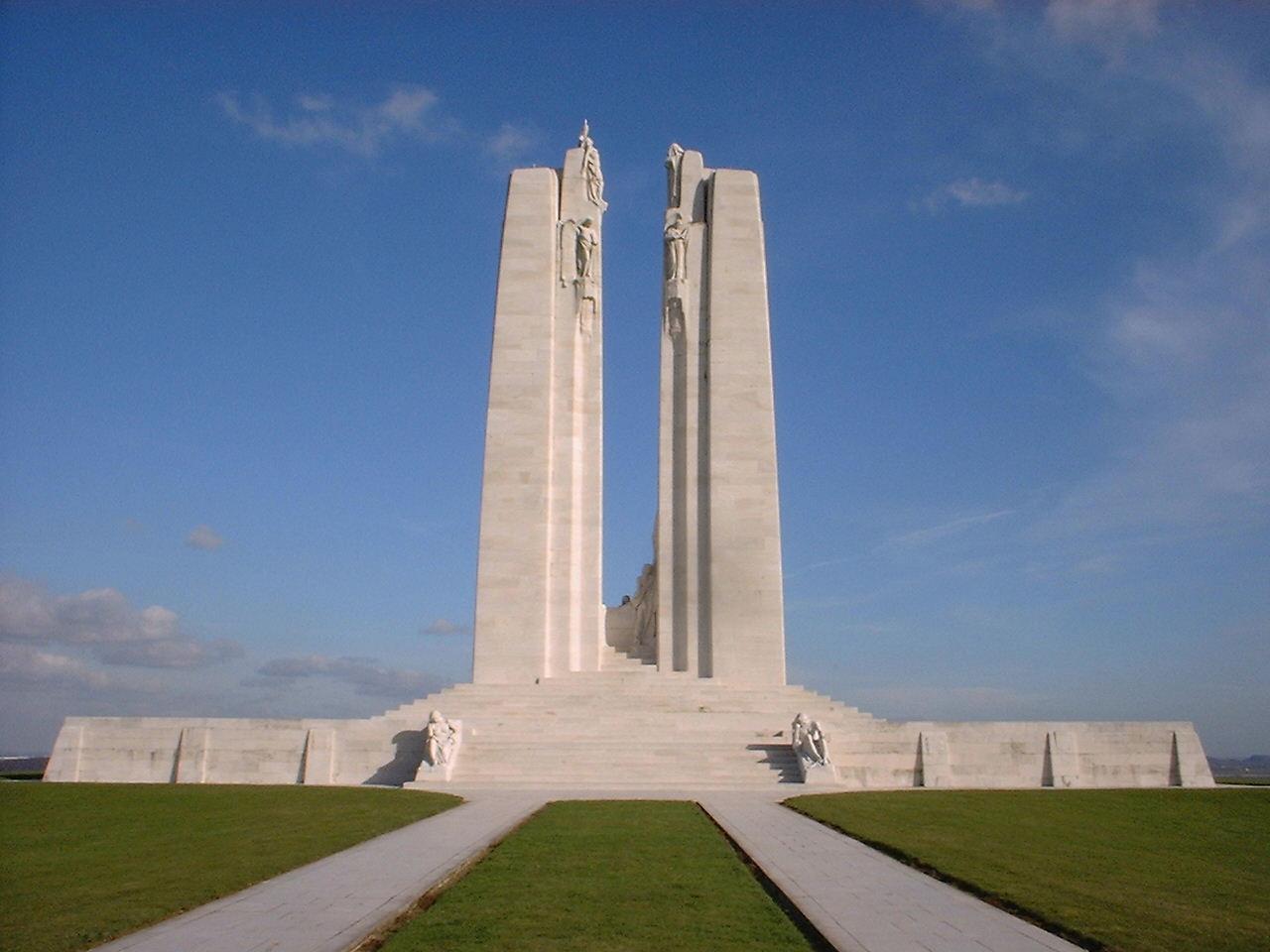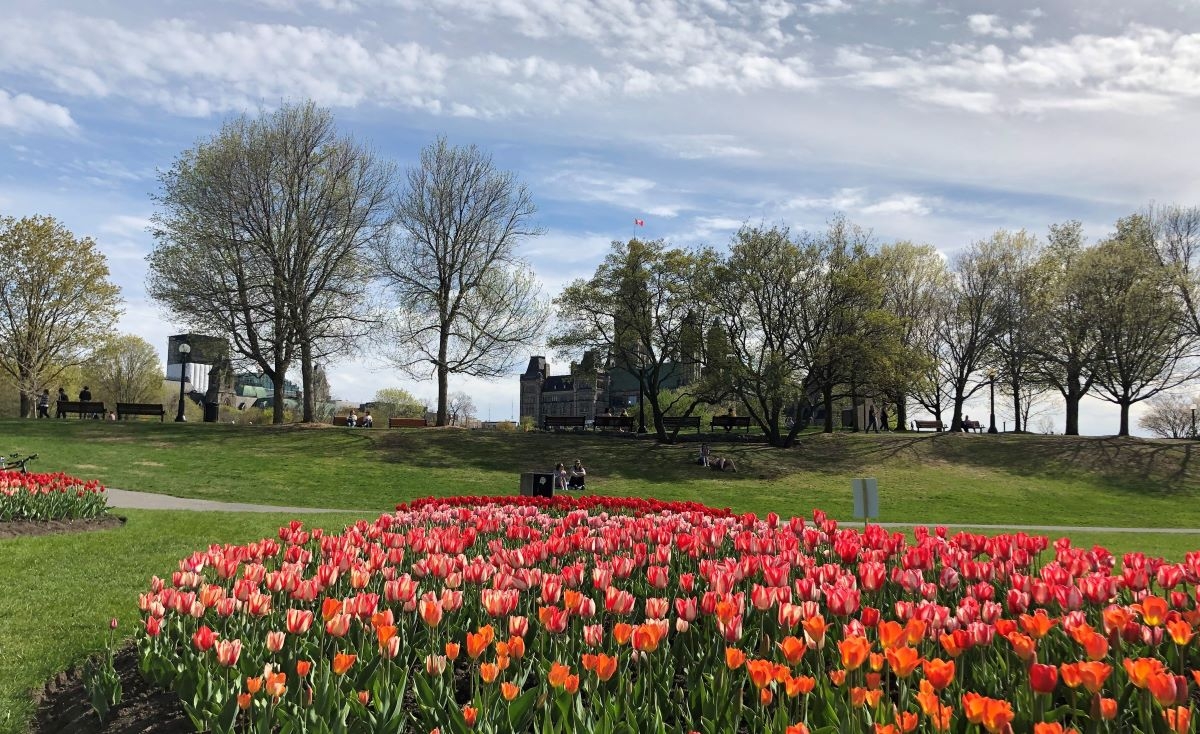
Commemorating the Battle of Vimy Ridge A Century Later
Photos courtesy of by Veterans Affairs and Jeremy Diamond
One of the most poignant stories from World War I, for me, is the story of the Christmas Truce. The story tells of pockets of troops on the front refusing to fight for several days at Christmas in 1914. Some accounts suggest that these soldiers went so far as to celebrate Christmas together, exchanging gifts and that they even played soccer against one another in no man’s land, after burying their fallen comrades.
More generally, I remember learning about the First World War in school when I was the age of many of the soldiers fighting, on both sides. It was unfathomable to me then. Now, many years later, it is still hard to really comprehend.
We know many facts about Canada’s role in the First World War: we know more than 650 000 men and women from Canada and Newfoundland served in World War I. We know roughly 66 000 perished and 172 000 others were injured. More than 2 800 Canadian Nursing Sisters served with the Canadian Army Medical Corps. Approximately 4 000 Indigenous men, roughly one third of all eligible Indigenous men, enlisted during the First World War. We know Canadians saw their first major action at Ypres on April 22, 1915 – the battle after which Lieutenant-Colonel John McCrae from Guelph, Ontario wrote In Flanders Fields, in honour of a friend who died there. Major Canadian action included St. Eloi, Mount Sorel, and Hill 70. The Battle of the Somme began on July 1, 1916. Canadians also took part in the Battle of Passchendaele from October to November 1917. The Battle of Vimy Ridge began on the morning of April 9, 1917, and ended April 12, 1917. It was the first time all four divisions of the Canadian Corps fought together as one formation. There were 10 600 Canadian casualties at the Battle of Vimy Ridge and around 3,600 perished.
On April 9, 2017, it will be exactly a century since the Battle of Vimy Ridge began. War has not become a relic of the distant or recent past. It is a daily news headline. Civilians are suffering, dying or fleeing warzones at unprecedented rates, becoming refugees. So what can the Commemoration Ceremony upon the 100th Anniversary of the Battle of Vimy Ridge offer us in these times?
 Vimy Foundation Executive Director Jeremy Diamond explains that the Vimy Foundation’s regular mandate supports the effort to make it possible for Canadian youth to visit the Canadian National Vimy Memorial in France each year. The act of visiting the site profoundly impacts these youth. They return home with stories from the war and the battle, they keep them alive by sharing them with their schools and communities. Diamond says the New Education Centre being unveiled at the ceremony on April 9, 2017, will connect people more deeply to the experience of the First World War and the battle of Vimy Ridge by offering more contexts through which to experience the history of this war and the specifics of this site. He stresses that the centre will not be an education centre to victory, just as the monument is not a monument to victory: “it is a monument to service and to sacrifice.”
Vimy Foundation Executive Director Jeremy Diamond explains that the Vimy Foundation’s regular mandate supports the effort to make it possible for Canadian youth to visit the Canadian National Vimy Memorial in France each year. The act of visiting the site profoundly impacts these youth. They return home with stories from the war and the battle, they keep them alive by sharing them with their schools and communities. Diamond says the New Education Centre being unveiled at the ceremony on April 9, 2017, will connect people more deeply to the experience of the First World War and the battle of Vimy Ridge by offering more contexts through which to experience the history of this war and the specifics of this site. He stresses that the centre will not be an education centre to victory, just as the monument is not a monument to victory: “it is a monument to service and to sacrifice.”
The Canadian National Vimy Memorial and The New Education Centre makes it possible, to not only see the trenches and tunnels that Canadians (and the French before them) used to defeat Germans during the battle, the New Education Centre will offer visitors an opportunity to see and hear about the battle and war from a variety of perspectives – and from both the German and Canadian sides, according to the Vimy Foundation Executive Director.
In the interest of full disclosure, I should mention that I knew about German being incorporated in the New Education Centre before speaking to Mr. Diamond. Last year, I was hired to coordinate the German voices for the centre and even lent my own voice to a few of the installations. As a Canadian scholar of German-Canadian Studies, I was intrigued by this decision. Yes, German is an official language of the now 60-year-old European Union. Yes, many German visitors go to Vimy each year. And, possibly, it also speaks to the fact that enemies can eventually become friends.
Diamond notes: “It’s a place for all to come to remember … when I go … I don’t only think of the Canadian perspective. I often walk around thinking ‘What happened here?’” “It was an underground war … you have a German soldier and a Canadian soldier on either side, digging down, living down there for weeks and months. How similar those stories are, how important it is to tell those stories now, a hundred years later, always gets me.”
With regards to the centenary celebration, Director Diamond stresses the need to speak to all of those present at the commemoration on April 9, 2017 – in ways that truly reach them. This 100th anniversary ceremony “will be more of a production than a wreath-laying ceremony with speeches by dignitaries.” There will be 12 000 students from across Canada in attendance, 30 000 people in total.
Listen to interview with Vimy Foundation Executive Director Jeremy Diamond
The Prime Minister of Canada Justin Trudeau will join His Excellency the Right Honourable David Johnston, Governor General of Canada and Their Royal Highnesses The Prince of Wales, the Duke of Cambridge, and Prince Harry, as well as Kent Hehr, Minister of Veterans Affairs and Associate Minister of National Defence, Harjit Sajjan, Minister of National Defence, and General Jonathan Vance, Chief of Defence Staff for the Canadian Armed Forces for the commemorations that will pay tribute to the sorrow, sacrifice and victory of the Battle of Vimy Ridge. Regarding the joint-commemoration, Prime Minister Justin Trudeau offers this: “The victory at Vimy Ridge was made possible through the combined efforts of Canada and its allies. It is fitting 100 years later to walk side-by-side with our allies to reflect on our victory, commemorate this milestone, and renew friendships as we continue to work together to defend freedom and democracy around the world.”
Commemorating and honouring the iconic Canadian moment that was the Battle of Vimy Ridge, opening the New Education Centre amidst the tunnels and trenches one hundred years later, is to acknowledge the need to expand our understanding of the battle experience in a war as it was once fought. Preserving the geography of quiet sorrow, of the gas-soaked and blood-drenched ground of Vimy Ridge, of the once rat-infested trenches adorned with the soldiers’ graffiti is to honour their experience while laying bare that wars are no longer fought this way. Now, an enemy is rarely within earshot. Perhaps the geography of the Vimy Ridge can also serve as a reminder that it is, and perhaps should be, harder to overlook the humanity of the enemy when you are close enough to play a game of soccer.








